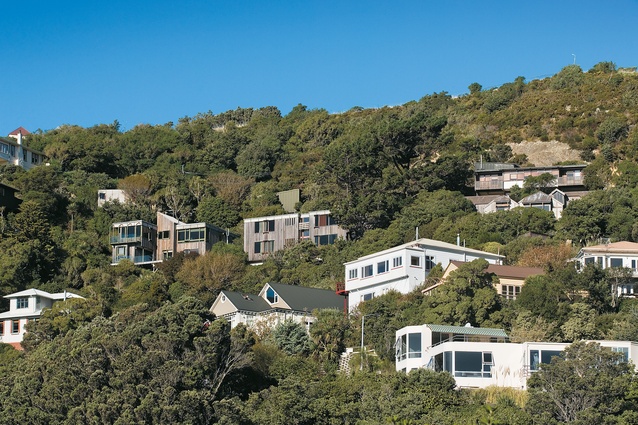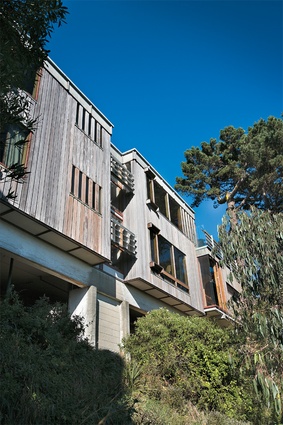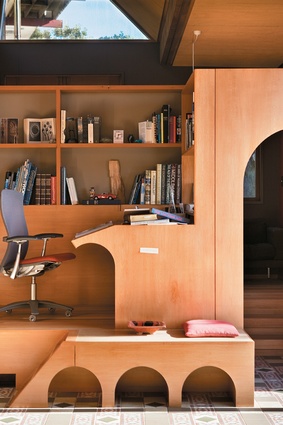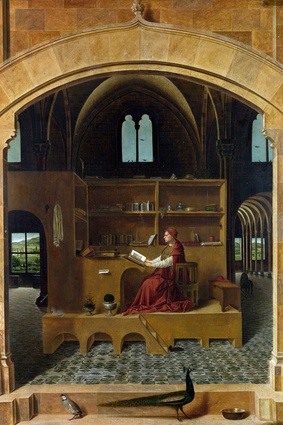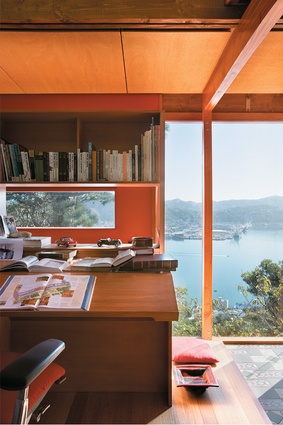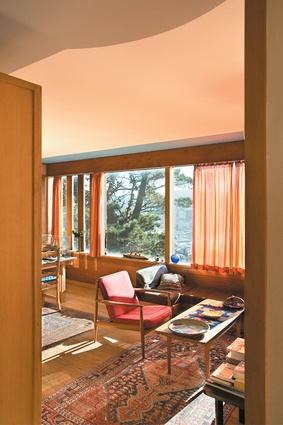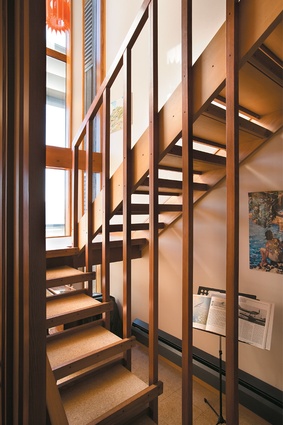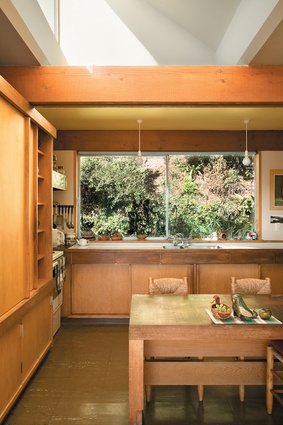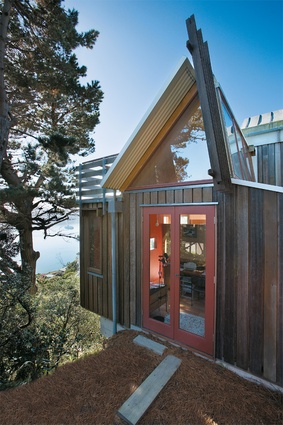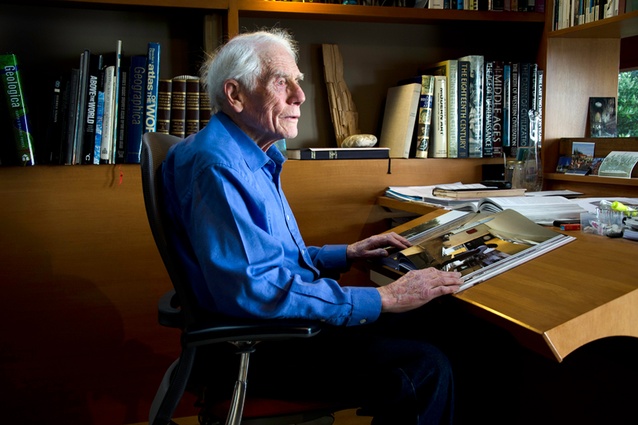Montane Essay
*Note: this article originally appeared in Houses issue 5
Bill Toomath's own house on Mt Victoria is a fine piece of mid-century modernism that now accommodates a studious Renaissance intervention.
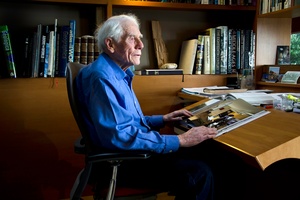
Bill Toomath is widely regarded as one of the country’s leading post-war architects, responsible for many houses and a significant body of educational work, including the Wellington Teachers’ College in Karori. The house he designed for his family, high on the hill above Oriental Bay, is considered one of Wellington’s finest modernist houses; this year (2007) it received a New Zealand Institute of Architects Enduring Award.
In the early 1960s, when the top of Mt Victoria was largely undeveloped, Toomath bought the rear of a section that fronted on to Palliser Road – an almost impossibly steep site, with limited access from the top and none from below. A few years earlier, in 1957, he had designed a house on a neighbouring site for Rona and Chip Bailey. For that house – one of his first commissions – Toomath cut a shelf in the slope, upon which he rested the rear of the house; the front was on stilts. This was the house as platform, anchored at the back.
When Toomath came to his design his own house he decided to move the house forward to create sheltered space between it and the bank behind. The house, which rises three floors out of the ground, is barely attached to the hill. Toomath had learnt from the Bailey house that, high up on Mt Vic, eaves were of no use – in a gusty northerly the rain wasn’t horizontal, it actually drove upwards from Oriental Bay.
Toomath discovered the problem of being one’s own client. As he puts it, “Clients have an expressed wish, something you can seize on, be inspired by, but for yourself, anything’s possible! I had to let the house become what it needed to be.” The house became a bastion, a fortress with minimum projections, providing shelter from the extreme weather: a simple rectangular box lying along the contour of the hill.
The materials were chosen for minimal maintenance: untreated redwood vertical boarding; Alstrip aluminium roofing, rib-jointed on site; and, for the roof edging, fibre-cement saturated in Aqualux silicon solution. Toomath had noticed the glare off the surface of the harbour, particularly at mid-winter, and therefore used a very dark, tinted glass from Belgium.
The two floors are almost identical in plan. The entry is the centre of the house with all circulation radiating from the core, in three dimensions. There are two front doors, one opening in, the other out, with a clever removable mullion. When both doors are opened an intimate sheltered space is created in contrast to its usual public role. The upper floor is conceived as the family space, with kitchen, family room, children’s bedrooms and bathroom. Downstairs is the parents’ realm: bedroom; sitting room; music room. The stair that joins the two floors is light and airy, bisecting the house and making it transparent, in the modern tradition.
Toomath is a master builder, fascinated – perhaps obsessed – with detailing. As a young architect he wanted his house to be affordable; the design of the structure is at once elegant and economical. He had been working with post and beam structures with exposed timber rafters that expressed structure, but on his own house he was interested in something subtler: the issue of how the house could be a neutral area without the structure asserting itself. Toomath designed what he calls “ribbon beam construction”. At the front and rear are 11x2 inch Oregon beams running the full 54-foot length of the house. The beams are notched into the top plates of the walls, tying the house together. Deeply proportioned, they lend the house unity and accentuate the linearity of the form.
Toomath never throws anything out and has developed eclectic collections of model cars, paintings and chairs. In retirement, he decided he wanted to build himself a study, a place of contemplation. At high school a French teacher introduced him to the writings of the great essayist Michel de Montaigne (1533-1592). Montaigne’s work has always inspired Toomath, who dreamed of constructing a turret, from which he could look out at the world. His thoughts turned to a painting he had first seen in 1951 at London’s National Gallery: Antonello da Messina’s Saint Jerome in his Study (circa 1474). The painting is a meditation on the world of the Christian ascetic (circa 340–420AD), a saint of both the Roman Catholic and Eastern Orthodox churches, whose life work was translating the Bible from Greek into the more accessible Latin.
“Somehow these ideas converged,” Toomath says, “and I decided to construct the painting.” Studying the study of a study, he painstakingly analysed Antonello’s painting, uncovering its geometry and dimensions. In 2002 Toomath started to design an addition to his house, to house the study. Initially, he intended to site the addition in the unused sub-basement of the house, but the circulation and access proved problematic. One day he woke with the idea to extend the lower floor to the south to create the study. The result is a work as meticulous and considered as Antonello’s painting – the painting is faithfully reproduced right down to the tile pattern on the floor.
The effect is remarkable: Toomath has made it possible to physically enter Antonello’s painting. The architect spent a long time studying the way the light fell in the painting to determine its direction. In the built result, the direction of the study has been mirrored, partly because it is in the southern hemisphere but also to allow the meditative view across the harbour. (Note: The making of the study has been chronicled in the 2007 documentary film, Antonello and the Architect).
After living in his house for 43 years, Toomath is constantly surprised at how much he learns from it. It is, he says, a constant exploration. The ceiling in the family room is painted white with a border of mid-blue on one side and grey on the other; a new skylight is lemon yellow. The articulation of this single plane is subtle but the result extraordinary; from certain angles the roof appears to be curved into a vault. Toomath sees this as a central space from which things unfold, where walls dissolve into interlocking space. Glimpses through to other rooms reveal and conceal – there is always more to be discovered. Toomath calls this process of discovery the ‘promenade to experience’ – in this house, a thoroughly worthwhile experience, one to be enjoyed over a lifetime.

